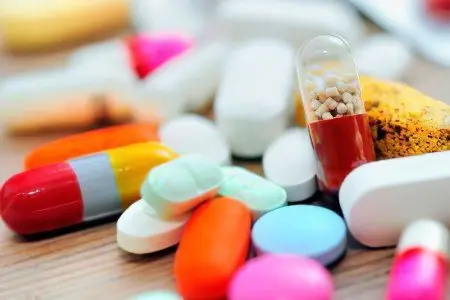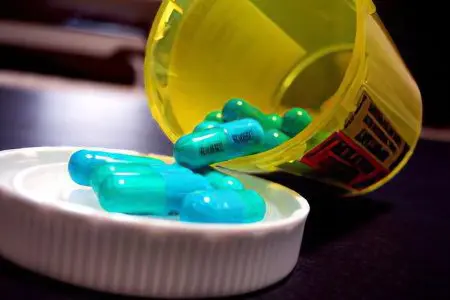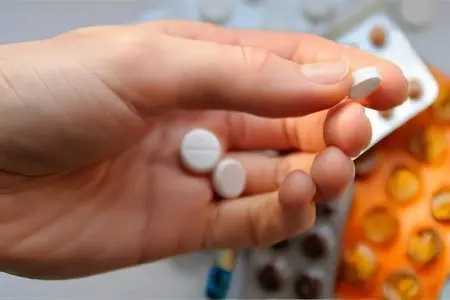Contents

Migraine is a hereditary disease that is characterized by severe throbbing headache and bouts of nausea, as well as increased sensitivity to bright lights and sounds. Migraine is more common in women (18% of the total population versus 6% of men), frequent attacks reduce performance and worsen the quality of life.
Patients with regular migraine attacks rarely go to the doctor, trying to relieve the pain on their own. Not knowing the correct treatment regimen, they take analgesics too late, which is why they have to increase the number of pills. Exceeding the dosage of analgesics creates an excessive burden on the liver and kidneys, which can provoke the so-called drug-induced migraine. In this case, the use of painkillers loses all meaning.
The ability to determine the approach of seizures by the first signs is necessary for the correct relief of pain.
Migraine has four phases:
The harbinger phase can be fixed due to the feeling of weakness and fatigue in the absence of real reasons. Chronic fatigue can signal many ailments, but most often it occurs due to pathologies of the central nervous system. Do not be lazy to visit the hospital for a full examination, no matter how confident you are;
The second phase is called the aura phase., at this stage, the patient develops vegetative disorders, distortions of vision, smell, tactile and taste sensations. The patient usually does not have pain, but it is difficult for him to concentrate and speak, the outlines of objects may blur, dizziness and dark spots appear before the eyes;
Pain phase – throbbing pain usually starts from the temple and gradually covers the entire forehead area, growing every minute;
Post Accession Period – feeling of weariness and weakness, as at the beginning of an attack, which passes after sleep.
Sometimes the aura phase may be absent, then the attack immediately begins with a headache, the increase of which takes from 10 minutes to several hours.
Now, a new generation of drugs, triptans, are used as a therapy for migraine attacks. These are specific analgesics that act on serotonin neurotransmitters, derivatives of 5-hydroxytryptamine, which is why this group of drugs got its name.
Triptans show real effectiveness in combating migraine headaches and are available to patients of various categories. Another advantage of this group of drugs is that they can be taken as a preventive measure between attacks.
The action of triptans – pills for migraine
All drugs in this group relieve headaches by triggering the same biochemical mechanism, but usually only 1-2 types of drugs help the patient. To determine if a particular triptan is suitable for a patient, it is necessary to test it in three migraine attacks.
What is the action of triptans?
Triptans bind to the receptors of the vascular walls and affect them, causing constriction of the vessels supplying the meninges;
They have a selective effect, communicating only with cerebral vessels;
Triptans block pain sensations by affecting the receptors of the spinal nucleus and reducing their sensitivity;
They cope well with other symptoms of migraine – photo and sound fear, nausea;
As a prophylaxis, they can be used to prevent recurrence of the disease.
Clinical trials confirm the positive effect of triptans in 60% of cases – this figure is much higher than that of traditional drugs for the treatment of migraine.
What are triptans for migraine and how to take them

The drugs in this group include: Zomig, Relpax, Naramig, Imigran, Sumatriptan, Rapimed, Amigrenin, Trimigren, Sumamigren – in tablets; Trimigren – suppositories; Imigran – spray.
Triptans should be taken no later than two hours after the onset of the attack, which occurs immediately after the end of the aura phase. If the increase in pain is too slow, so that it is impossible to accurately determine its migraine origin, traditional analgesics are prescribed.
If the patient knows for sure that the headache is caused by a migraine attack, then triptans should be combined with prokinetic drugs, which include, for example, metoclopramide.
The correct way to relieve migraine attacks:
When fixing the phase of the precursor or aura, give the patient motilium (dosage 10 mg), aspirin (dosage 1000 mg) and drink strong sweet coffee or other caffeinated drink;
After 45 minutes, provided that the pain does not subside, it is necessary to take a triptan tablet;
For the treatment of migraine with a pronounced phase of the aura, triptan is prescribed to the patient with a headache, and during the manifestation of the aura itself, aspirin;
If after taking a non-specific analgesic there is no relief for three attacks, you should immediately drink a triptan.
After two days, according to statistics, about half of patients experience pain again. When there are signs of relapse, it is recommended to take another tablet of the drug that was used earlier. Treatment should be continued without exceeding the maximum daily dose after two hours from the onset of the first symptoms. With a weak return of pain, Naproxen or another similar drug is sufficient.
Severe migraine attacks, in which the headache persists both after triptans and after conventional analgesics, require a special treatment regimen. The doctor combines triptans, anticonvulsants and beta-blockers, which include drugs such as Labetalol, Betaxolol, Penbutolol, Nadolol.
Limiting the use of other analgesics and triptans for migraine attacks

Chronic use of triptans to combat migraine attacks, doctors recommend no more than 10 days a month.
Traditional analgesics against migraine are used no more than half a month in a row. If you use them more often, then the combination with other drugs can provoke headaches. The circle closes, therapy becomes useless.
Preparations Tempalgin, Analgin, Pentalgin, Baralgin and similar drugs (which are based on metamizole sodium) banned in most developed countries. Barbiturates, as well as opiates in the composition, contribute to the transition of the disease to a chronic form, and can also cause dependence on drugs. Phenobarbital as part of Pentalgin can be addictive. Codeine impairs the absorption of analgesics. Therefore, drugs from the above groups, as well as the not mentioned Sedalgin and Caffetin, in most cases should be abandoned.
Triptan contraindications:
It is forbidden to use while breastfeeding and during pregnancy;
Any serious diseases associated with the cardiovascular system: hypertension, angina pectoris, coronary heart disease, cerebrovascular accidents;
Past or present pathologies of the liver and kidneys;
Allergic sensitivity to individual components of the drug.
Possible side effects of triptan treatment include:
From the nervous system: regular dizziness, heaviness in the limbs, sometimes manifested by a constant feeling of warmth;
From the side of the cardiovascular system: attacks of tachycardia and angina pectoris, permanent heart rhythm disturbances, increased blood pressure;
From the digestive tract: gastritis, dry mouth, accompanied by nausea and diarrhea, ischemic colitis, infarction of the spleen or intestines;
In the work of the genitourinary system, disorders such as polyuria and increased urination may occur;
Musculoskeletal system: myalgia and muscle weakness;
Allergic reactions: anaphylactic shock, hyperemia, rashes, very rarely – Quincke’s edema.
Triptans are well tolerated, with few side effects that go away on their own without any treatment. Adverse reactions to the drug occur only in the first four hours after the use of the drug and do not increase with a repeated dose.
Triptans do not mix well with the following classes of pharmaceuticals:
Antidepressants;
antibiotics;
antifungal drugs;
Antiviral agents.









